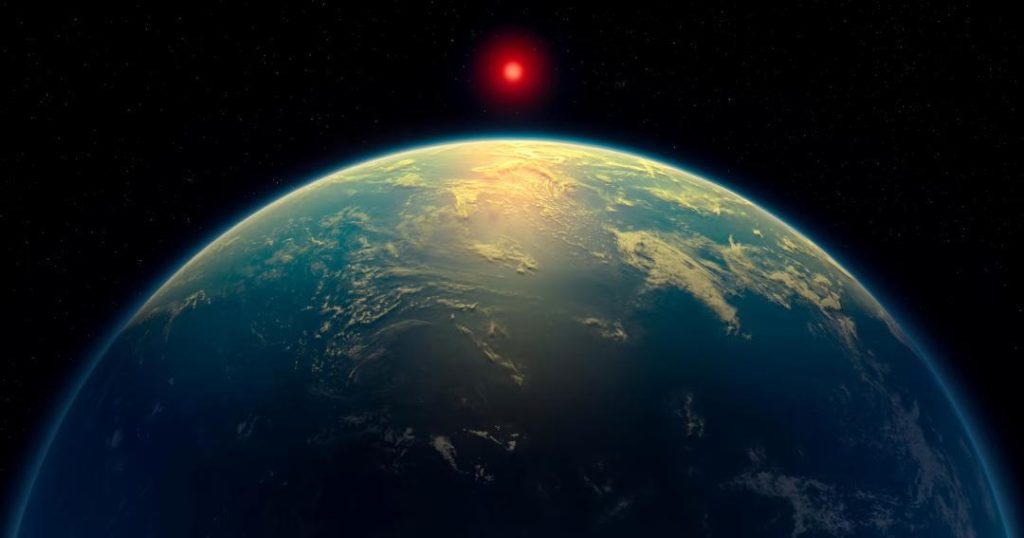
Strongest Evidence Yet of Alien Life Found
For decades, scientists have been searching for signs of life beyond our solar system. While there have been several promising discoveries, a recent finding by a Cambridge University team using the James Webb Space Telescope (JWST) has sparked excitement as it is being hailed as the strongest evidence yet of possible life on an alien planet.
The team, led by Dr. Angelos Tsiaras, used the JWST to study the atmospheres of exoplanets, which are planets that orbit stars other than the Sun. The specific exoplanet in question is K2-18, a giant planet located about 111 light-years away from Earth.
After analyzing the data collected by the JWST, the team discovered what they believe are chemical fingerprints of two compounds that are only known to be produced by life on Earth. These compounds are dimethyl sulfide (DMS) and dimethyl disulfide (DMD).
DMS and DMD are both organic molecules that are commonly found in the oceans and atmosphere of our planet. On Earth, they are produced by certain types of bacteria and other microorganisms as a byproduct of their metabolism. They are also released into the atmosphere through volcanic activity and are present in the oceans and atmosphere in relatively small concentrations.
The fact that the team detected these compounds in the atmosphere of K2-18 is significant because it suggests that the planet may have a similar chemistry to Earth. This, in turn, raises the possibility that the planet could support life, either in the form of microorganisms or even more complex organisms.
The discovery was made possible by the JWST’s advanced technology, which allows it to study the atmospheres of exoplanets in unprecedented detail. The JWST is a space-based telescope that is designed to study the formation of the first stars and galaxies in the universe. It is equipped with a range of instruments that allow it to detect the light that is reflected off the surfaces of distant planets and the atmospheres surrounding them.
The team used the JWST’s Near-Infrared Spectrograph (NIRSpec) to study the atmosphere of K2-18. NIRSpec is an instrument that can analyze the light that is reflected off the surface of a planet and break it down into its component colors. This allows scientists to study the chemical composition of a planet’s atmosphere and detect the presence of specific molecules.
The team analyzed the data collected by NIRSpec and found that it contained a unique signature of the two compounds, DMS and DMD. This signature is consistent with the presence of these compounds in the atmosphere of K2-18, and it suggests that the planet may have a similar chemistry to Earth.
The discovery is significant because it provides strong evidence that life could exist on other planets. While we have yet to find definitive proof of extraterrestrial life, the detection of DMS and DMD in the atmosphere of K2-18 is a strong indication that the planet may be capable of supporting life.
The team’s findings are also significant because they provide new insights into the potential for life on other planets. The detection of DMS and DMD in K2-18’s atmosphere suggests that the planet may have a similar chemistry to Earth, which raises the possibility that the planet could support life.
In addition, the discovery highlights the importance of continued investment in space exploration and the development of new technologies that can help us better understand the universe. The JWST is just one example of the many advanced telescopes that are being built and launched to study the universe and search for signs of life.
The team’s findings have been published in the journal Nature Astronomy, and they are widely being hailed as a major breakthrough in the search for extraterrestrial life.
Source:






